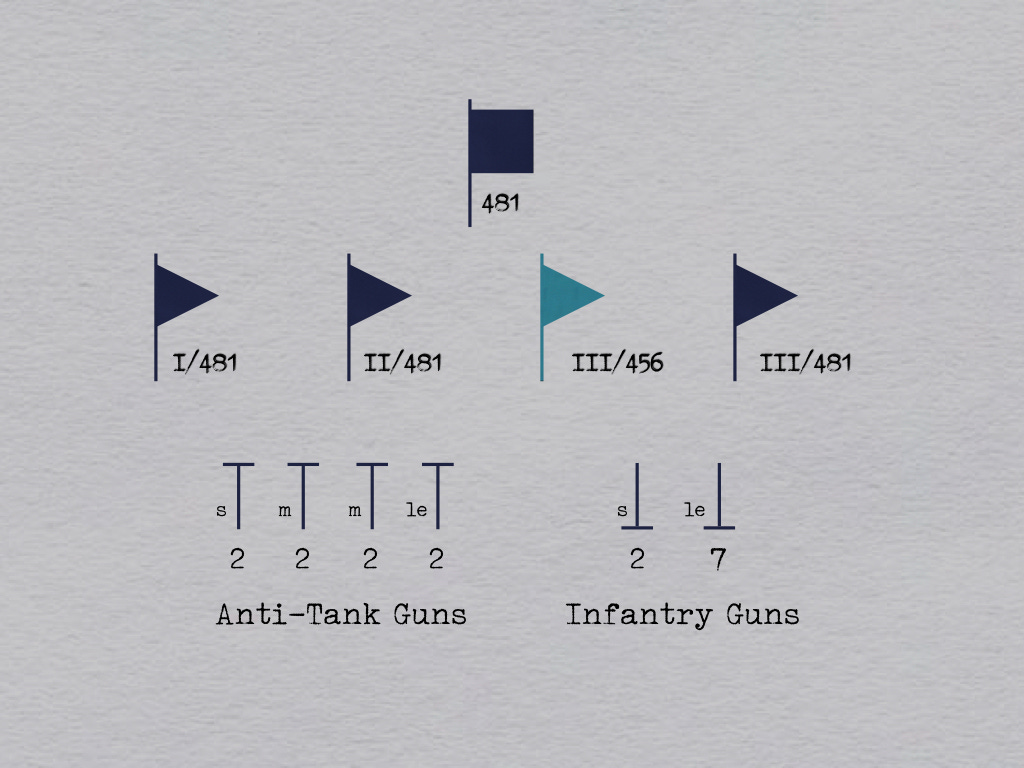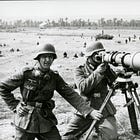A Division in the Defense (Part III)
Note: The letters next to the symbols for anti-tank and infantry guns describe the relative weight of the piece within its category. “S” stands for schwer (“heavy.”) “M” means mittlere (“medium.”) “Le” indicates “leicht” (“light.”)
The four regiments holding forward positions - two of which were organic to the 256th Infantry Division and two of which had been borrowed from other formations - suffered fewer gaps in their ranks than units assigned to the division reserve. Each retained substantial portions of their infantry gun and anti-tank companies, and each could also count on the services of at least half of the number of riflemen, machine gunners, and mortar men called for by their tables of organization.
The regiment on the middle of the sector, the 481st Grenadier Regiment, bore the strongest resemblance to an ideal unit of its type. That is, it consisted of three grenadier battalions, an infantry gun company, and an anti-tank gun company.
The infantry gun company of the 481st Grenadier Regiment possessed both of the heavy (150mm) infantry guns it was supposed to have, as well as all of the six light (75mm) infantry guns it rated. Indeed, it had somehow managed to acquire a seventh light infantry gun.
The anti-tank gun company rated six heavy (75mm) anti-tank guns and six medium (50mm) anti-tank guns. Unfortunately, it only possessed two weapons of each type.Thus, the anti-tank company was made do with an eclectic mix of weapons: two heavy (75mm) guns, two medium (50mm) guns, two Soviet-built 45mm guns (which also qualified as medium guns), and two light (37mm) guns.
Of the three organic grenadier battalions of the 481st Grenadier Regiment, the largest could muster 321 men and the smallest 173.
In order to increase the number of men defending the sector assigned to the 481st Grenadier Regiment, the division commander provided that outfit with a fourth battalion. Borrowed from the other organic infantry regiment of the division(the 456th Grenadier Regiment), that battalion could put 300 or so men into the field.
Source: Barbara Selz, Das Grüne Regiment. Der Weg der 256. Infanterie-Division aus der Sicht des Regiments 481 (Freiburg im Breisgau: Verlag Otto Kehrer, 1970)
.





